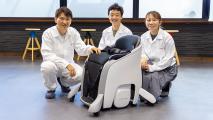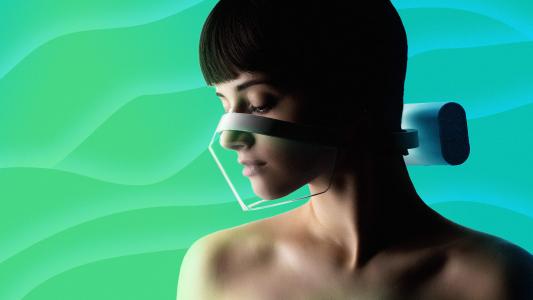Nike sells more shoes than any other company in the world, and while the shapes, styles, and sizes of its sneakers may vary, they all have one thing in common: you need to use your hands to put them on.
That may seem intrinsic to shoes, but that’s changing in 2021, as Nike has just announced its first completely hands-free sneaker — and the design was inspired by a letter from a teenage boy.
Shoe Stress
In 2012, Matthew Walzer was 16 years old, and like many people his age, he was thinking a lot about college.
However, unlike his peers, Walzer wasn’t just considering majors and dorm setups — he was wondering whether he’d be able to find someone at school to tie his shoes.
Walzer had been born with cerebral palsy, a disorder that affects some of his motor skills, and he lacks the hand flexibility needed to put on and tie laces.
So, with college on the horizon, he decided to take his problem to the largest footwear company in the world.
“My dream is to go to the college of my choice without having to worry about someone coming to tie my shoes every day,” Walzer wrote in a letter to Nike. “I’ve worn Nike basketball shoes all my life. I can only wear this type of shoe, because I need ankle support to walk.”
“At 16 years old, I am able to completely dress myself, but my parents still have to tie my shoes,” he continued. “As a teenager who is striving to become totally self-sufficient, I find this extremely frustrating and, at times, embarrassing.”
Birth of the FlyEase
The letter ended up in the hands of Nike designer Tobie Hatfield, who began working with Walzer on a prototype. Before the end of 2012, the teen had a pair of custom Nikes on his feet that he could put on and take off without any assistance.
When I put the shoes on every morning, they give the greatest sense of independence
Matthew Walzer
“When I put the shoes on every morning, they give the greatest sense of independence and accomplishment I have ever felt in my life,” Walzer told Nike.
The company didn’t stop there, though.
Hatfield and his team continued to develop the shoes, and in 2015, Nike released the FlyEase, a sneaker with a zipper and strap closure that makes them easier for people with limited mobility to put on and take off.
Now, the company has taken the design to the next level with a completely hands-free sneaker: the GO FlyEase.
Nike’s Hands-Free Sneaker
Nike’s GO FlyEase doesn’t have any zippers, straps, or laces at all. What it does have is a “kickstand,” a “tensioner,” and a “diving board.”
Usually, the part of a sneaker that touches the ground (the outsole) is just one straight piece, but for the hands-free sneaker, Nike split it in two — a front and a back — connected by a hinge.
The company then added a little ledge to the back part by the heel (right where you probably already step on your shoe to take it off when you don’t feel like untying the laces).
This back part of the outsole is the kickstand, and when you step on it with the toes of your opposite foot, the GO FlyEase pops open at the hinge.
A band that swings from one side of the shoe, around the heel, and back to the other side — the tensioner — holds the shoe in this open position so you can slide your foot out.
The diving board is the part of the sneaker that touches the bottom of your foot (the insole). Nike left that in one piece, so when the shoe is in the open position, there’s a wedge-shaped gap between the diving board and the kickstand.
When you want to put the shoes on, you just step into them and press your foot down on the diving board. The tensioner then pulls the kickstand up around your heel and holds it in place.
Universal Design
While the journey to the GO FlyEase began with a call for great accessibility, the hands-free sneaker isn’t exclusively for people who have trouble tying laces — they could appeal to anyone who likes the look of sneakers but the ease of slip-ons.
“What I love about this shoe in particular is we listened to the extreme needs of (people with specific limitations),” Sarah Reinertsen, the senior director of Nike Ease, told Fast Company. “But with this solution we feel like it’s a universal proposition.”
The GO FlyEase costs $120, and Nike plans to make it available to members of its rewards program on February 15. The general public will have to wait until later this year to get their hands on the hands-free sneaker.
We’d love to hear from you! If you have a comment about this article or if you have a tip for a future Freethink story, please email us at [email protected].






